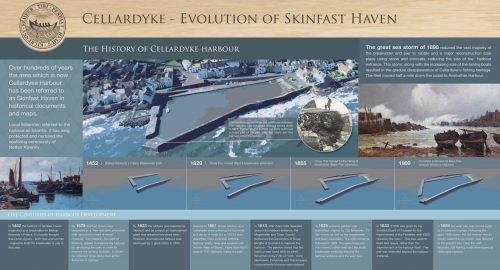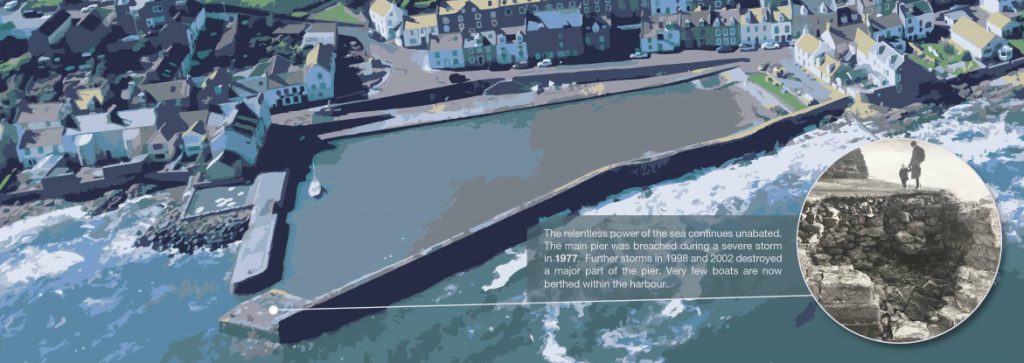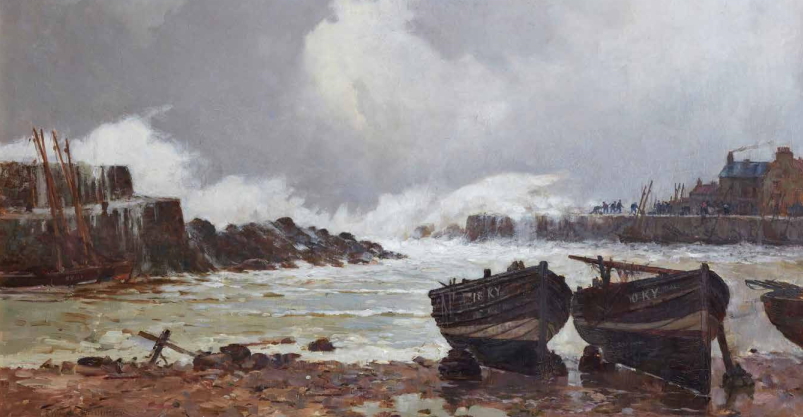Evolution of Skinfast Haven
The History of Cellardyke Harbour
Over hundreds of years the area which is now Cellardyke Harbour has been referred to as Skinfast Haven in historical documents and maps.
Local fishermen referred to the harbour as Skimfie. It has long protected and nurtured the seafaring community of Nether Kilrenny.

1452 – 1829 – 1855 – 1900
Great Storm 1898
The great sea storm of 1898 reduced the vast majority of the breakwater and pier to rubble and a major reconstruction took place using stone and concrete, reducing the size of the harbour entrance.
This storm, along with the increasing size of the fishing boats resulted in the gradual disappearance of Cellardyke’s fishing heritage. The fleet moved half a mile down the coast to Anstruther Harbour
Scroll left and right below to travel a historical timeline
- 1452 AD
- 1579 AD
- 1623 AD
- 1681 AD
- 1813 AD
- 1825 AD
- 1833 AD
- 1854 AD
By 1579 Skinfast Haven was described as a ‘new sea port, previously little used and in need of repair’. However, John Beaton, the Laird of Kilrenny, agreed to improve the harbour by renovating the piers in order to improve the landing facilities. In return he collected tithes (fees) from all the fishermen’s catches.
In 1813, after many fatal disasters around the harbour entrance, the Magistrates and Town Council petitioned the Convention of Royal Burghs of Scotland to improve the harbour. The petition stated that the harbour was ‘used daily by other fishermen in the Firth of Forth – from Newhaven, Fisherrow and Prestonpans’. Improvements however were delayed.



